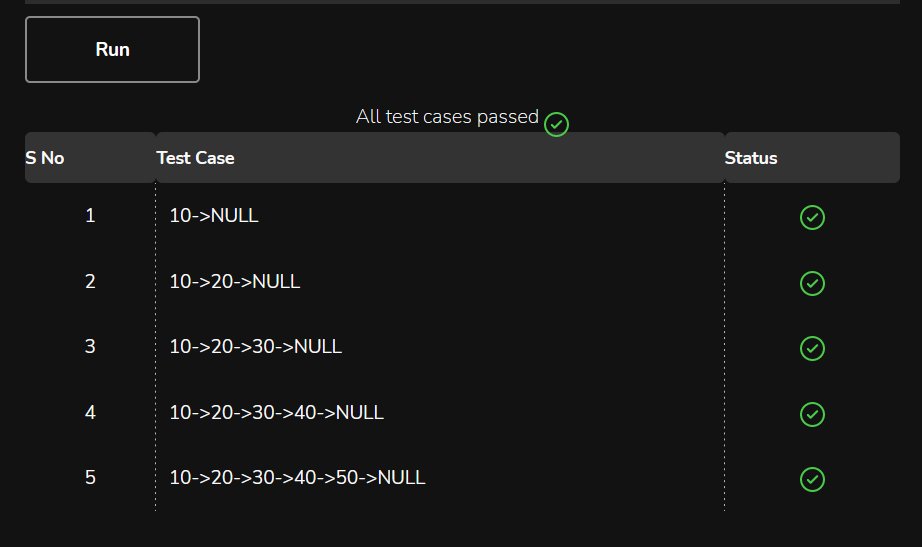你可能會喜歡
In this tutorial i am going to show you how to find duplicates in a string using bitwise operations. This method has advantage over the other methods in that it takes O(n) time and O(1) extra or auxiliary space. firstclicklimited.com/tutorials/inde…

Implement the function void reverse(struct node **head) which takes one argument. &head - Address of the head node. Your task is to reverse the given linked list.


Another scenario where you can use pointer to pointer in c is when you want to avoid a dangling or a null pointer. This happens when a pointer variable defined in one function is made to ... Click here firstclicklimited.com/tutorials/inde… to continue reading.

Learn Computer Programming @LearnComputerP1 · 43s To analyze the time complexity of any recursive function, we need to know the recurrence relation (We take the individual runtime of the recursive calls in the recursive function and sum them up...) firstclicklimited.com/tutorials/inde…

In time complexity analysis each statement in the algorithm takes 1 unit of time to perform its task. So looking at this function: total = 0 takes 1 unit of time, return total takes 1 unit of time and the total time taken therefore is 1+1=2. Detail here firstclicklimited.com/tutorials/inde…

If i have some natural numbers say: 1, 2, 3, 4, 5, 6, 7 and i want the summation of these numbers, how do i solve it recursively? The recurrence relation for the sum of first n natural numbers will be as shown in the image. Click here firstclicklimited.com/.../recursion-… for the solution

The divide and conquer strategy says that if a problem is large, then break the problem into sub-problems and solve them; then combine the solutions of the sub-problems to get the solution of the large problem.firstclicklimited.com/tutorials/inde…
Sorting Algorithms Bubble Sort Insertion Sort Selection Sort Heap Sort Merge Sort Quick Sort Tree Sort Shell Sort Count Sort Bucket/Bin Sort Radix Sort web.facebook.com/groups/1160321…
Bubble Sort Algorithm – With Time And Space Complexity firstclicklimited.com/tutorials/inde…
Remove All Occurrences Of An Element From Array In c – Interview Question firstclicklimited.com/tutorials/inde…
How To Calculate Time Complexity And Space Complexity Of An Algorithm – Big O Notation Examples firstclicklimited.com/tutorials/inde…
Remove Duplicates From Sorted Array In C – Using Two Pointers firstclicklimited.com/tutorials/inde…
Remove All Occurrences Of An Element From Array In c – Interview Question Solution firstclicklimited.com/tutorials/inde…
Two Sum With Two Pointers – Interview Question Solution firstclicklimited.com/tutorials/inde…
United States 趨勢
- 1. Dolphins 29.3K posts
- 2. Ryan Rollins 8,145 posts
- 3. Lamar 44.4K posts
- 4. Ravens 42.6K posts
- 5. Mike McDaniel 2,825 posts
- 6. Derrick Henry 4,744 posts
- 7. Achane 4,074 posts
- 8. Happy Halloween 531K posts
- 9. #TNFonPrime 2,249 posts
- 10. Jackson 5 3,522 posts
- 11. Bucks 44.7K posts
- 12. #PhinsUp 4,042 posts
- 13. Tulane 8,754 posts
- 14. Ollie Gordon 2,259 posts
- 15. Mark Andrews 2,893 posts
- 16. Giannis 22.9K posts
- 17. Kyle Hamilton 1,584 posts
- 18. #911onABC 14.1K posts
- 19. Georgetown 3,750 posts
- 20. UTSA 2,816 posts
Something went wrong.
Something went wrong.




































































